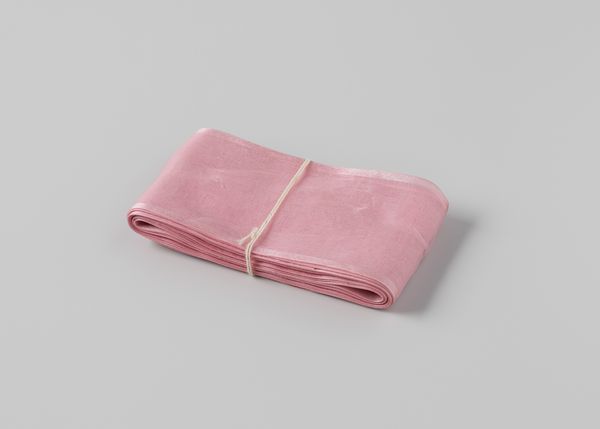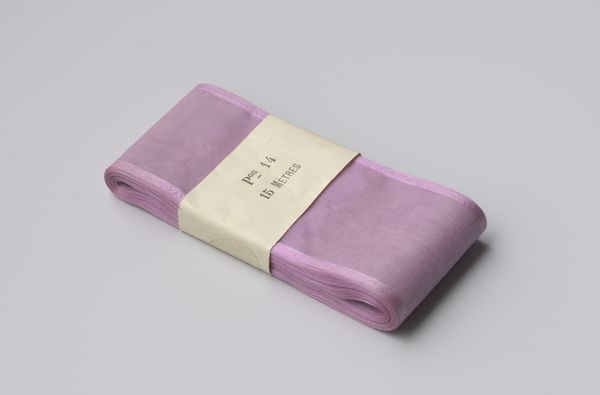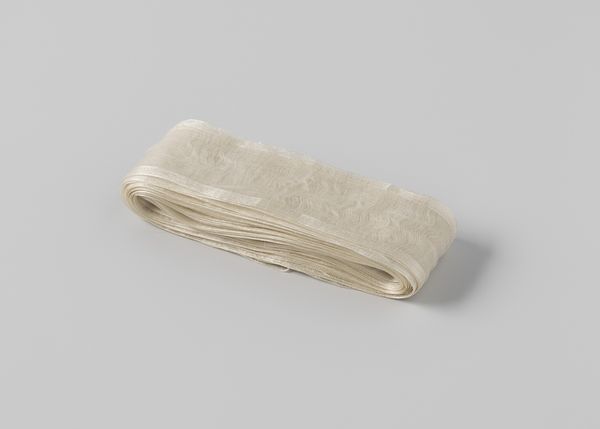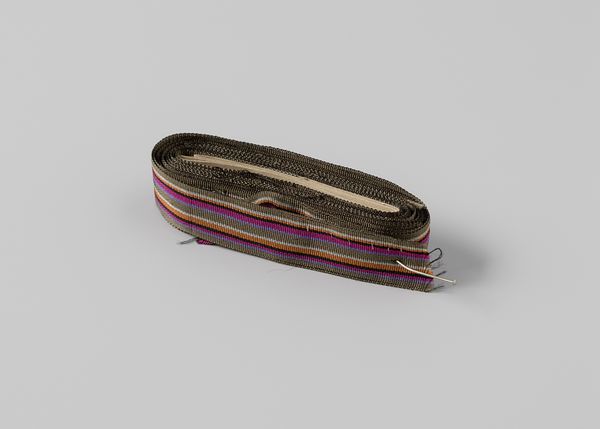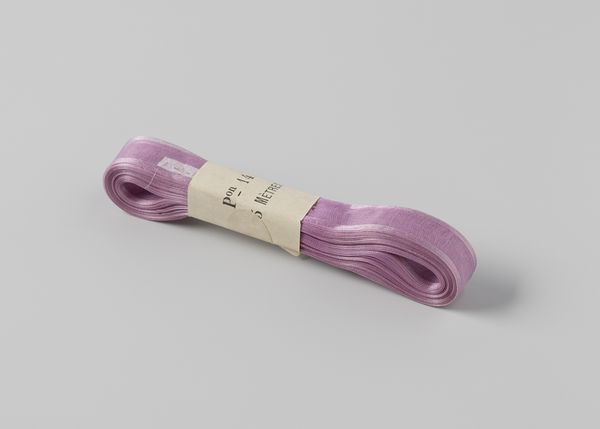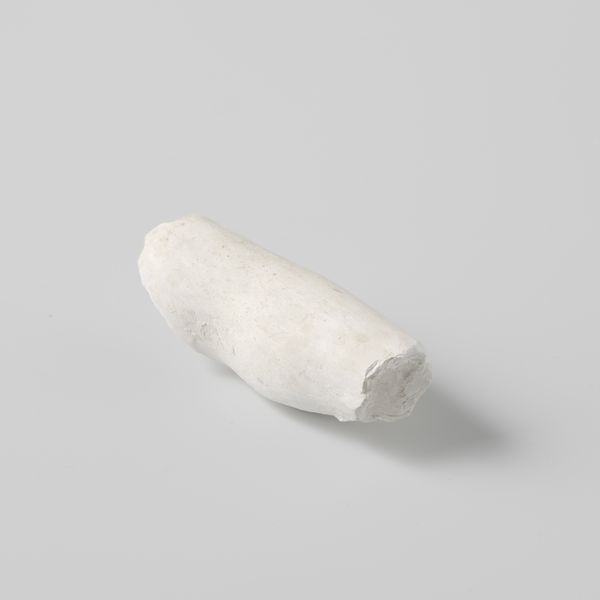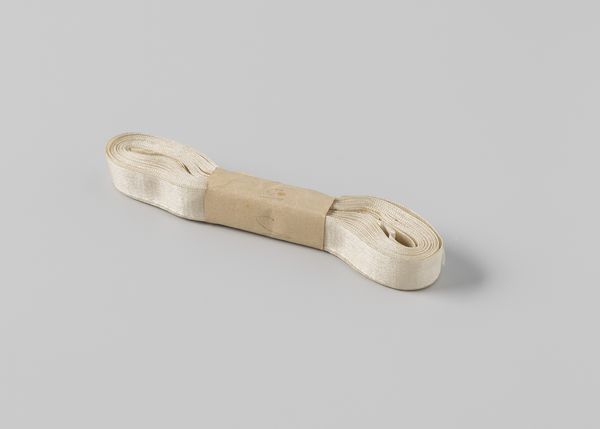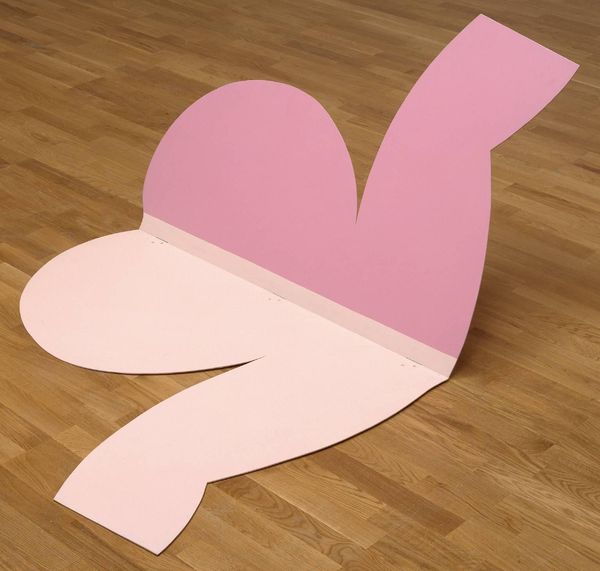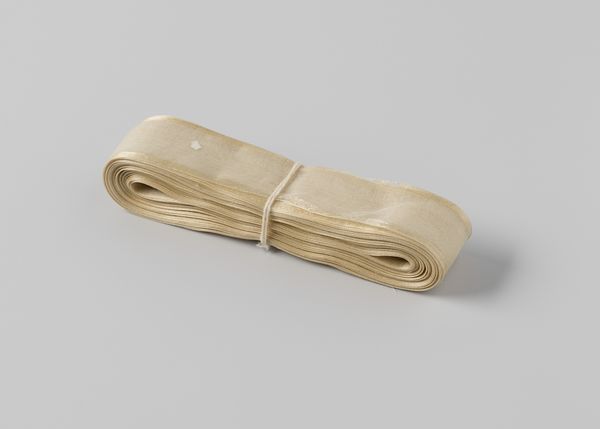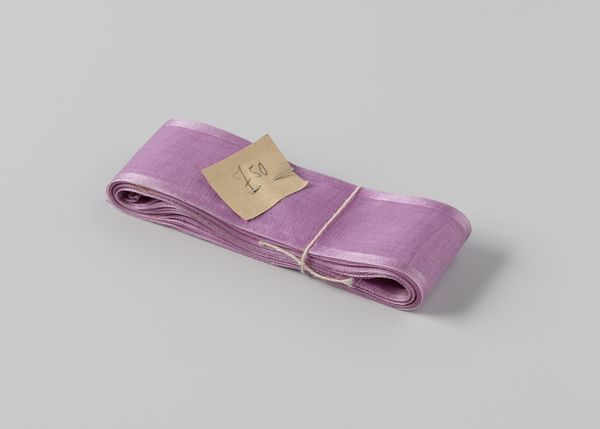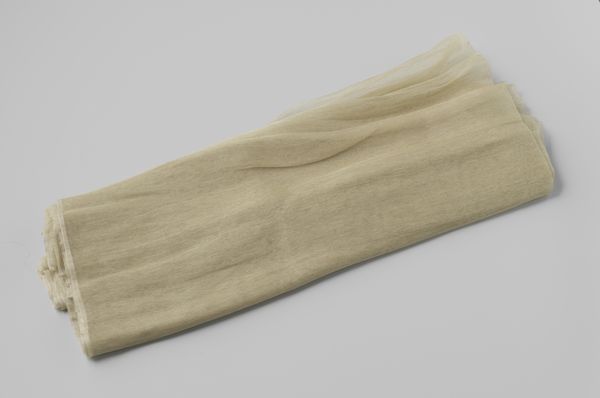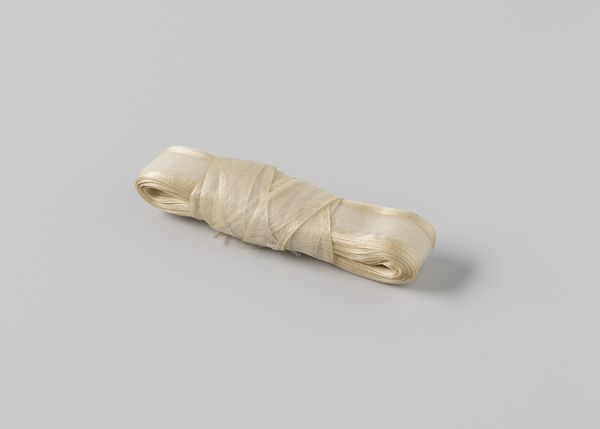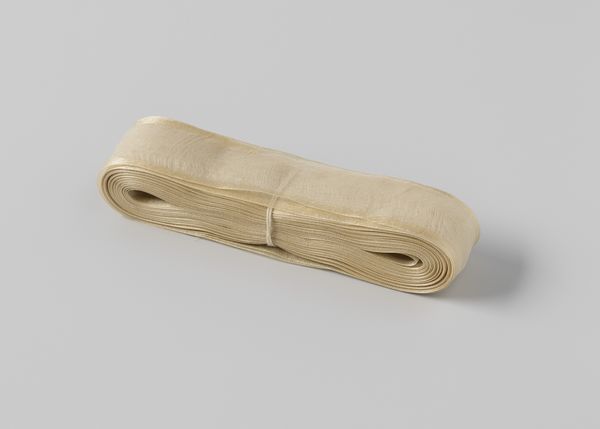
textile
#
textile
#
decorative-art
Dimensions: width 3 cm, height 2 cm, length 12 cm
Copyright: Rijks Museum: Open Domain
Editor: So, we're looking at "Lint van roze gaas," or "Ribbon of pink gauze," made sometime between 1900 and 1915. It’s textile and it’s considered decorative art. It seems incredibly simple, almost mundane, yet the color is quite lovely and makes it so inviting! What do you see in this piece? Curator: It’s deceptively simple, isn’t it? A ribbon isn’t just a ribbon; it is imbued with meaning that transcends its practical use. Consider, what is the significance of pink, especially during that era? This colour, though delicate, often speaks of romance and affection, even new beginnings. And gauze – its lightness suggests ephemerality, things that fade, whisper or hint. What does this pairing tell you about intended usage? Editor: Perhaps it suggests transient beauty? Decoration, but not meant to last forever. Were ribbons used symbolically, maybe in mourning or celebrations at this time? Curator: Precisely. Ribbons functioned as non-verbal cues. Now think about social rituals. Were they often presented to commemorate an event or a person? Think of their use in packaging luxury goods, or perhaps securing a young girl's hair. That blush of pink – would that have been more aligned to marking childhood? Or even loss? How would such semiotics have been perceived, unconsciously perhaps? Editor: It’s strange to think of an everyday object like a ribbon carrying such cultural weight. I guess I never really considered it before. I had never seen them that way! Thank you. Curator: It demonstrates how even the smallest of objects carry cultural memory and unspoken social contracts, it is through objects like these we come to a deeper understanding of ourselves and the society we create.
Comments
No comments
Be the first to comment and join the conversation on the ultimate creative platform.
